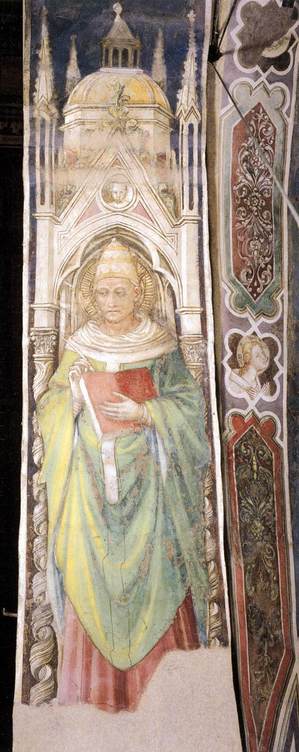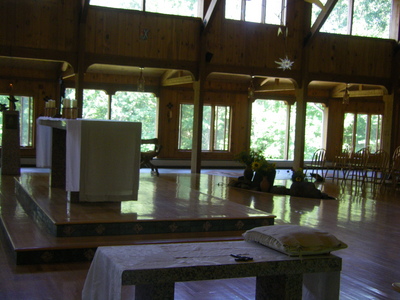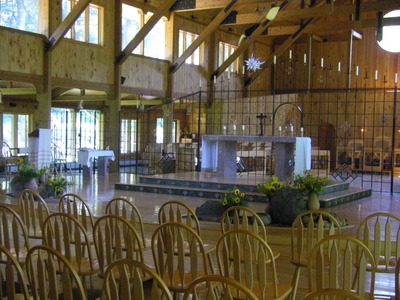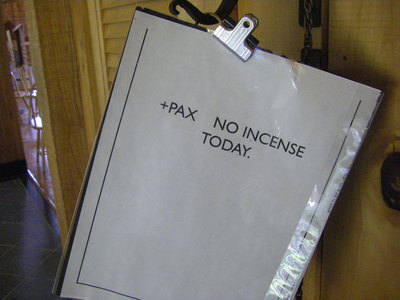 The 2010 Dominican General Chapter opened on August 31st (and will close on September 21st) and the 130 capitulars elected Father Bruno Cadoré, 55, as the 86th successor of Saint Dominic; he immediately succeeds Father Carlos Aspiroz Costa who has served for the last 9 years. Father Bruno, until now, has been the Prior Provincial of the French Province and trained as a pediatrics physician with an interest in child hematology and in bio-ethics. He’s also lived and worked in Haiti.
The 2010 Dominican General Chapter opened on August 31st (and will close on September 21st) and the 130 capitulars elected Father Bruno Cadoré, 55, as the 86th successor of Saint Dominic; he immediately succeeds Father Carlos Aspiroz Costa who has served for the last 9 years. Father Bruno, until now, has been the Prior Provincial of the French Province and trained as a pediatrics physician with an interest in child hematology and in bio-ethics. He’s also lived and worked in Haiti.
Blessed Catherine Racconigi
 O Lord, our hope, You enriched Blessed Catherine with an abundance of heavenly gifts and filled her heart with You alone. With the help of her prayers may Christ be fastened to our hearts as He was fastened to the cross for our salvation.
O Lord, our hope, You enriched Blessed Catherine with an abundance of heavenly gifts and filled her heart with You alone. With the help of her prayers may Christ be fastened to our hearts as He was fastened to the cross for our salvation.
Saint Gregory the Great
You received divine grace from heaven, O blessed Gregory, and strength from His divine power. You sought to follow the way of the Gospel, and your journey’s end brought you Christ’s reward. O blessed saint, beg Him to save us! (Troparion)
Some pictures today
The September Martyrs: Blessed John du Lau & companions
 The Benedictines and Carmelites in some places in the USA, and of course in England and France, liturgically remember the September Martyrs, also called the Paris Martyrs; you will also see the memorial listed as “Blessed John du Lau and companions” after the Archbishop of Arles, the highest ranking prelate among the 191 martyrs. The Benedictine nuns of Stanbrook Abbey are connected with the Carmelite nuns and retain some of the relics. Historians tells us that about 1500 clergy and religious were killed in 1792. And this act of martyrdom inspired the writing of Georeges Bernanos’s “Dialogues of the Carmelites” and the famous opera of Francis Poulenc, by the same name.
The Benedictines and Carmelites in some places in the USA, and of course in England and France, liturgically remember the September Martyrs, also called the Paris Martyrs; you will also see the memorial listed as “Blessed John du Lau and companions” after the Archbishop of Arles, the highest ranking prelate among the 191 martyrs. The Benedictine nuns of Stanbrook Abbey are connected with the Carmelite nuns and retain some of the relics. Historians tells us that about 1500 clergy and religious were killed in 1792. And this act of martyrdom inspired the writing of Georeges Bernanos’s “Dialogues of the Carmelites” and the famous opera of Francis Poulenc, by the same name.
Liturgical New Year for the Byzantine Church
Happy New Liturgical Year for the Byzantine Church! Have a blessed 7519!!! The Byzantine Church understands this date to be the years since the creation of the world. A new liturgical year, a new beginning to give God glory, honor and praise!!!!
Cause for sainthood opened for priest in Boston: Joseph Muzquiz
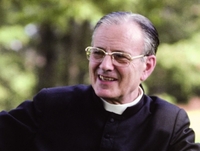 The Archdiocese of Boston and Opus Dei have begun in earnest the study of the cause of saint of Father Joseph Muzquiz. Muzquiz labored in the Boston area for many years and died there in 1981. These first steps are being taken to do a proper investigation in possibility of presenting a cause for sainthood to the Church.
The Archdiocese of Boston and Opus Dei have begun in earnest the study of the cause of saint of Father Joseph Muzquiz. Muzquiz labored in the Boston area for many years and died there in 1981. These first steps are being taken to do a proper investigation in possibility of presenting a cause for sainthood to the Church.
Pope Benedict XVI’s monthly prayer intentions for September 2010
Prayer is realizing that we are in relationship with the Trinity: Father, Son and the Holy Spirit. Prayer before the Blessed Trinity is what defines us. For the month of September, let us keep in mind and heart the following prayer intentions proposed by the Holy Father:
Connecticut’s Flying Merkel about to take flight
Britain’s Bishops have no taste
 The UK Bishops’ Conference will be providing the Holy Father –and the Church universal– this sanctuary for the Sacrifice of the Mass and the Rite of Beatification for Cardinal Newman. The the only possible thing to say is: OMG!!!! What rubbish.
The UK Bishops’ Conference will be providing the Holy Father –and the Church universal– this sanctuary for the Sacrifice of the Mass and the Rite of Beatification for Cardinal Newman. The the only possible thing to say is: OMG!!!! What rubbish.
